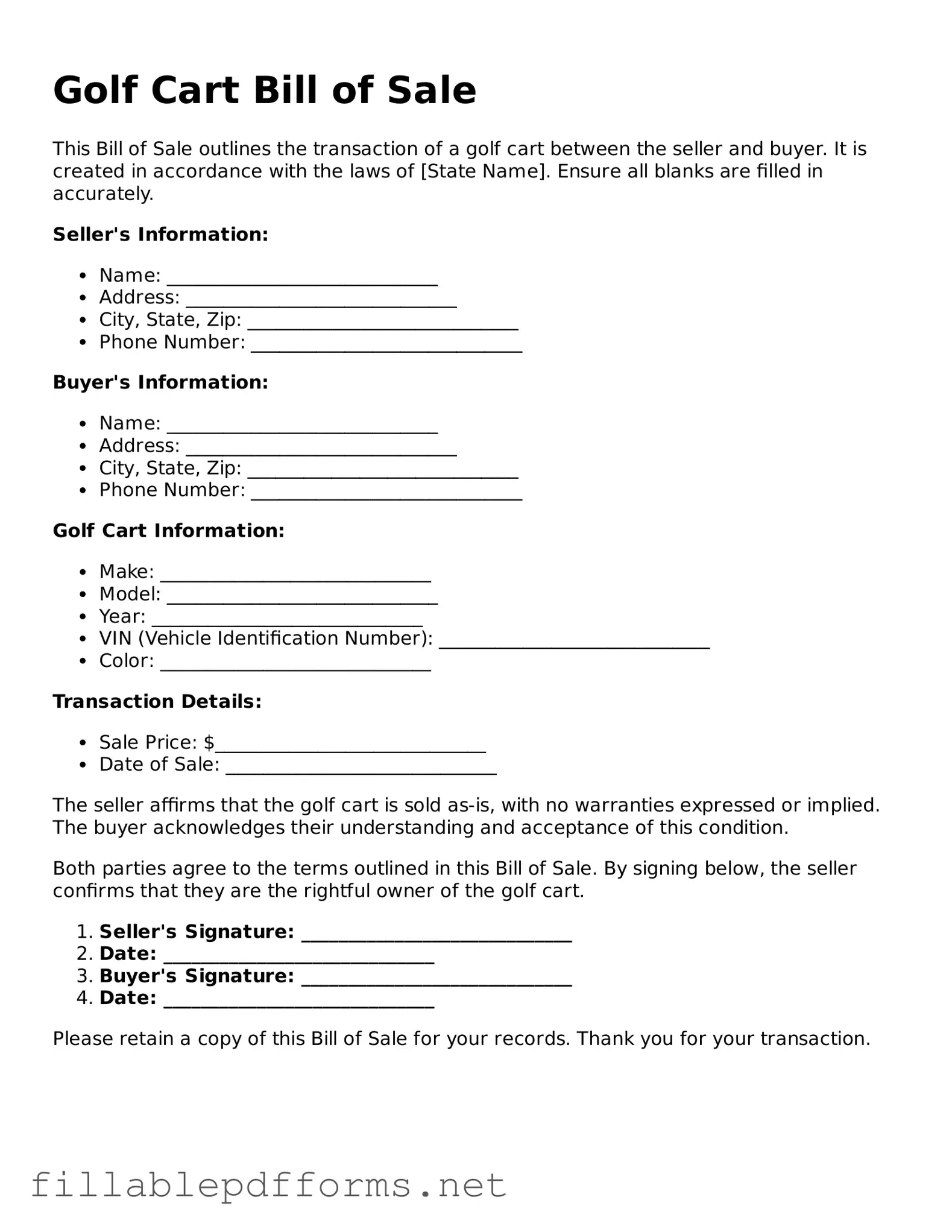When purchasing or selling a golf cart, a Golf Cart Bill of Sale form plays a crucial role in documenting the transaction. This form serves as a legal record that outlines the details of the sale, including the names and addresses of both the buyer and the seller, the purchase price, and the date of the transaction. Additionally, it often includes information about the golf cart itself, such as its make, model, year, and vehicle identification number (VIN). By providing a clear and concise account of the sale, this document helps protect both parties by establishing ownership and confirming that the transaction took place. It can also serve as proof of sale for registration purposes, should the buyer choose to register the golf cart with their local authorities. Overall, the Golf Cart Bill of Sale form is an essential tool that facilitates a smooth transfer of ownership while ensuring that both parties have a mutual understanding of the terms of the sale.
